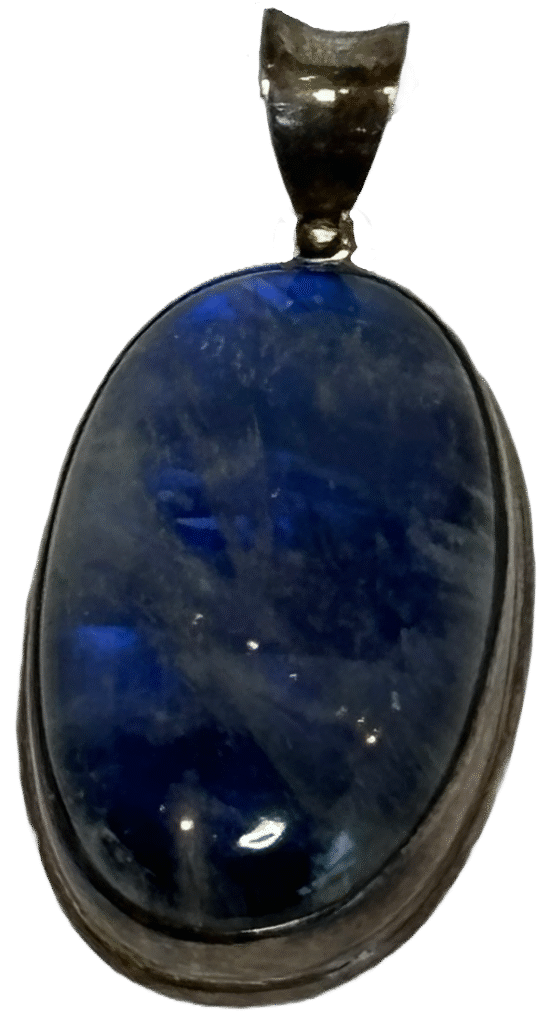
Blue moonstone is one of nature’s most captivating gemstones, renowned not only for its ethereal glow but also for its rich tapestry of history, mythology, and healing properties. This article explores the origins of its name and alternate titles, its composition and varieties, geographical locations where it is found, significant archaeological finds and historical usage, and the intriguing folklore, mystical attributes, and astrological connections that continue to enhance its allure.
Origins of the Name and Alternate Names
The name moonstone stems from the gem’s otherworldly luminescence, which evokes the gentle radiance of the moon. The blue variety, in particular, has been admired for its delicate bluish sheen reminiscent of a clear lunar night. Historically, blue moonstone has also been referred to as adularia, a name derived from the Adula Alps in Switzerland, where these stones were once prominently discovered. Other less common monikers include “spectrolite” when referring to varieties with vivid, prismatic effects, further highlighting the gem’s unique optical qualities.
Composition, Physical Characteristics and Varieties
Moonstone belongs to the feldspar group of minerals and is chiefly composed of orthoclase or a mixture of orthoclase and plagioclase. Its hallmark is the adularescence—a captivating glow that seems to emanate from beneath its surface. In blue moonstone, this phenomenon presents as a soft blue sheen that appears to move and change with the viewing angle.
Varieties and Characteristics
- Blue Moonstone: Known for its subtle to vivid blue adularescence, it is prized in fine jewellery for its delicate, almost mystical beauty.
- Spectrolite: A variety that exhibits a broader spectrum of colours, though it still often highlights blue tones.
- White Moonstone: While not blue, this variety also displays adularescence and is sometimes paired with the blue variety for its complementary qualities.
The stone’s pearly lustre, combined with its semi-translucent quality, makes it a favourite among gem collectors and designers alike.
Geographical Locations
Blue moonstone is found in several parts of the world. Historically, the most notable sources have been in Sri Lanka and India, where traditional mining techniques have been used to extract the stone. In more recent times, deposits have also been discovered in parts of Australia, Madagascar, and the United States. The geographical diversity of moonstone sources contributes to the subtle differences in colour and adularescence observed between specimens from various regions.
Archaeological and Significant Finds
Archaeological evidence suggests that moonstone has been used for millennia. In ancient times, it was incorporated into amulets, talismans, and ceremonial objects, often believed to harness the power of the moon. Early civilisations in India, Egypt, and Mesopotamia regarded the stone as sacred, associating it with lunar deities and the divine feminine. In modern times, notable finds include beautifully carved artefacts and ornamental pieces unearthed in archaeological digs, which have provided valuable insights into its historical significance and usage across different cultures.
Historical and Current Usage
Throughout history, blue moonstone has been valued not only for its beauty but also for its perceived protective and healing qualities. In ancient rituals, it was often used to invoke the protective energy of the moon and to promote emotional balance and inner wisdom. Today, the gemstone remains popular in contemporary jewellery and holistic practices, frequently featured in designs that aim to combine aesthetic appeal with a sense of spiritual well-being.
Interesting Facts
- Lunar Connection: Its name and shimmering appearance have long connected moonstone with the cycles of the moon, often symbolising new beginnings and transitions.
- Optical Phenomenon: The adularescence effect is not due to any pigment but rather to the microscopic intergrowth of different feldspar minerals, which scatters light in a distinctive manner.
- Cultural Impact: Moonstone has been a muse for poets and artists alike, inspiring countless works that celebrate its enigmatic charm.
Folklore, Legends and Tales
Many cultures have woven rich tales around blue moonstone. In folklore, it is often seen as a talisman that protects its wearer from misfortune and ill will. Ancient legends describe the stone as a gift from the moon goddess, imbuing it with the power to enhance intuition, dream clarity, and even prophetic insight. Some tales even suggest that moonstone can channel the energy of lunar eclipses, transforming moments of darkness into opportunities for inner growth and renewal.
Mystical Healing Properties
Blue moonstone is widely regarded in the realm of crystal healing. It is believed to promote emotional balance, alleviate stress, and foster a sense of calm and tranquillity. Practitioners of holistic therapies claim that the stone can help to soothe turbulent emotions, particularly those related to grief and anxiety. Its soft, soothing energy is thought to stimulate the inner eye, enhancing psychic abilities and deepening meditation practices.
Links with Astrology and the Zodiac
Astrologically, blue moonstone is often associated with the Moon, the planet that governs emotions, intuition, and the subconscious mind. It is said to be particularly beneficial for those with a strong lunar influence in their natal charts. Some astrologers recommend moonstone for individuals born under zodiac signs such as Cancer, Pisces, and Scorpio, who are believed to be naturally intuitive and emotionally sensitive. By harnessing the lunar energies, blue moonstone is thought to help balance emotional extremes and promote inner harmony.
The Chakra System
In the context of the chakra system, blue moonstone is primarily linked to the crown and third-eye chakras. The crown chakra, located at the top of the head, is associated with spiritual connectivity and higher consciousness, while the third-eye chakra governs intuition and inner vision. By aligning these energy centres, blue moonstone is believed to enhance spiritual awareness, deepen meditative states, and facilitate a clearer understanding of one’s inner self.
